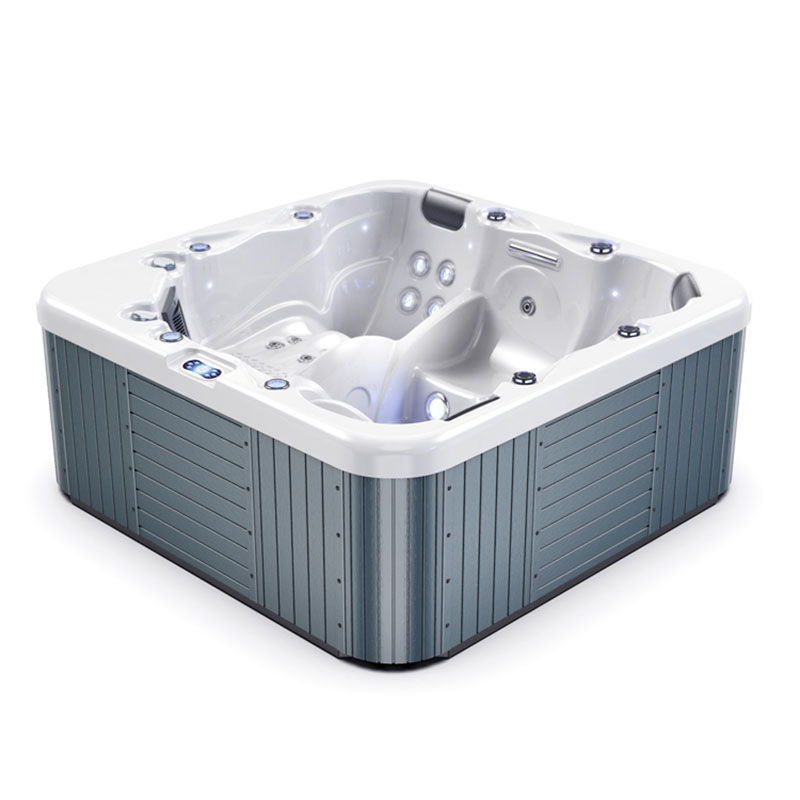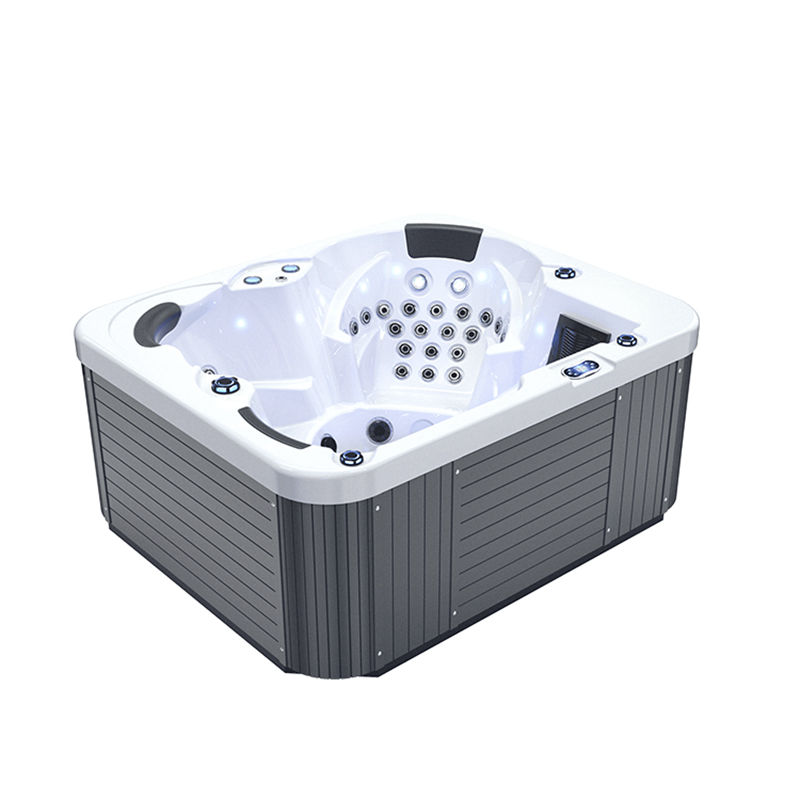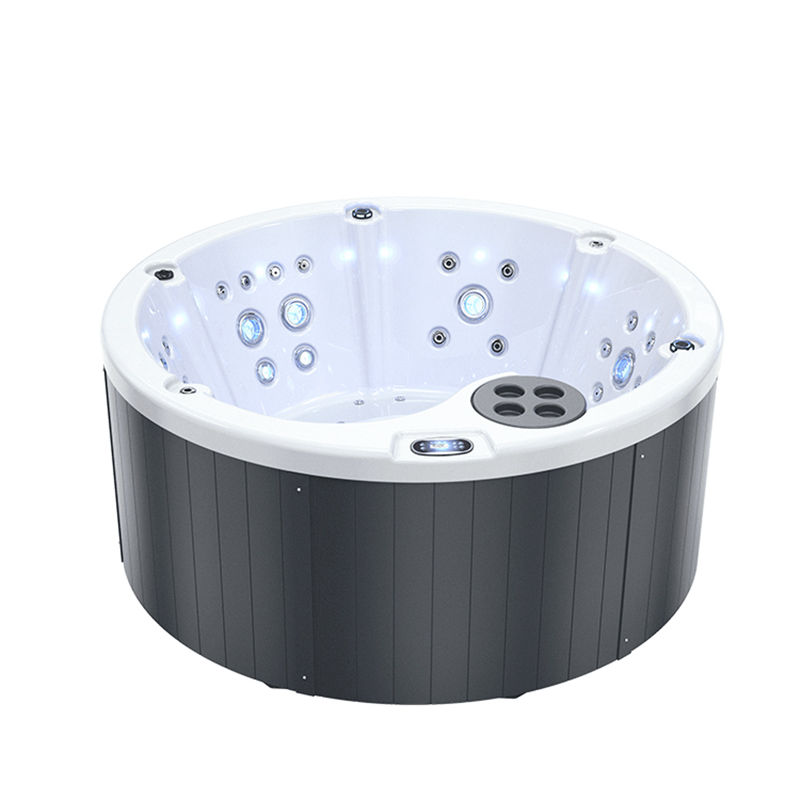An outdoor whirlpool hot tub is an ideal way to relax, especially after a long day of work. Enjoying the soothing effects of warm water and massage jets can greatly relieve physical and mental fatigue. However, a common problem that many outdoor whirlpool hot tub users may encounter is the generation of foam. Foam not only affects the bathing experience, but can also cause water quality problems and damage the equipment. At this time, many people will consider using a foam remover to solve this problem. So, how is foam generated? Is a foam remover really suitable for outdoor whirlpool hot tubs? What are the precautions for using it?
This article will discuss the working principle of a foam remover, its applicability, and how to effectively use this product in an outdoor whirlpool hot tub by deeply analyzing the causes of foam, helping you better maintain the water quality of your outdoor whirlpool hot tub and avoid unnecessary problems.

How is foam generated in an outdoor whirlpool hot tub?
The reasons for the formation of foam in an outdoor whirlpool hot tub are varied, usually related to organic matter, chemicals, and water balance in the water. Here are some common causes of foam:
Residue and impurities in the water
Foam is often caused by impurities in the water. Every time you use your outdoor whirlpool hot tub, makeup, skin care products, shampoo residue, perfume, sweat, and natural oils from your body enter the water. These organic substances combine with the chemicals in the bathtub to increase the surface tension of the water, which ultimately causes foam.
Imbalance of chemicals in the water
Maintaining the balance of outdoor whirlpool hot tub water requires the use of various chemicals such as chlorine, bromine, pH adjusters, etc. If these chemicals are not used properly or the chemical balance in the water is disturbed, foam is more likely to form. High or low pH, hardness, or total alkalinity can cause water quality problems and lead to excessive foam.
Poor-quality or expired detergents
Sometimes, using low-quality or expired detergents can also cause foam problems. Poor-quality detergents often contain more fillers and residues, which produce a lot of foam when mixed with water.
Foam caused by soft water
The hardness of the water can also affect the production of foam. Soft water usually contains fewer minerals and is more likely to produce foam, while hard water has a higher mineral content and is less likely to produce foam. If a soft water system is used in an outdoor whirlpool hot tub, the foam problem may be more significant.
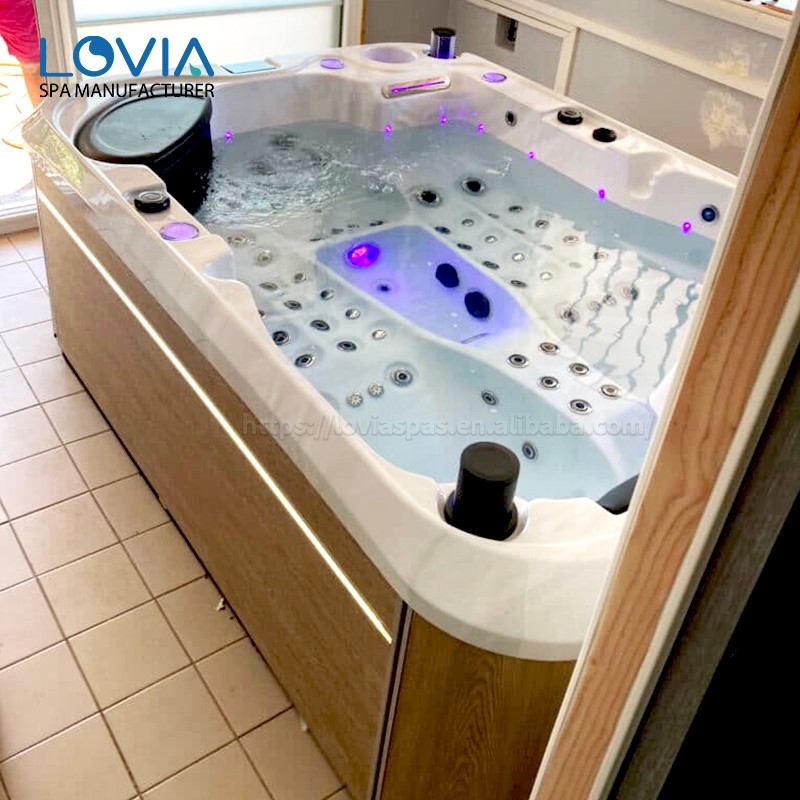
What is a defoamer?
A defoamer, also called a defoamer, is a chemical product designed to reduce or eliminate foam on the surface of water. It works mainly by destroying the structure of the foam.
The chemical principle of defoamers
Foam is formed because of surface tension. The attraction between water molecules forms a film that wraps around the air and produces foam. Defoamers change the surface tension of water so that foam cannot persist. Defoamers often contain silicones or polysiloxanes, which quickly disperse in water to form a very thin film that suppresses the surface tension of water and destroys foam.
The principle of this action is physical rather than chemical reaction, so defoamers do not produce byproducts in water or react harmfully with other chemicals.
Types of defoamers
Defoamers are available in many forms, including liquid, powder, gel, etc., and liquid form is usually the most common. They are all designed to quickly remove foam from outdoor whirlpool hot tubs and restore the clarity and smoothness of water.
Most foam removers are advertised as fast-acting, with effects visible in almost minutes. However, the effects of these products are usually short-term, and they cannot fundamentally solve the cause of foam formation. Therefore, although foam removers can help you quickly deal with foam problems, you still need to find out the root cause of foam to completely solve the problem.
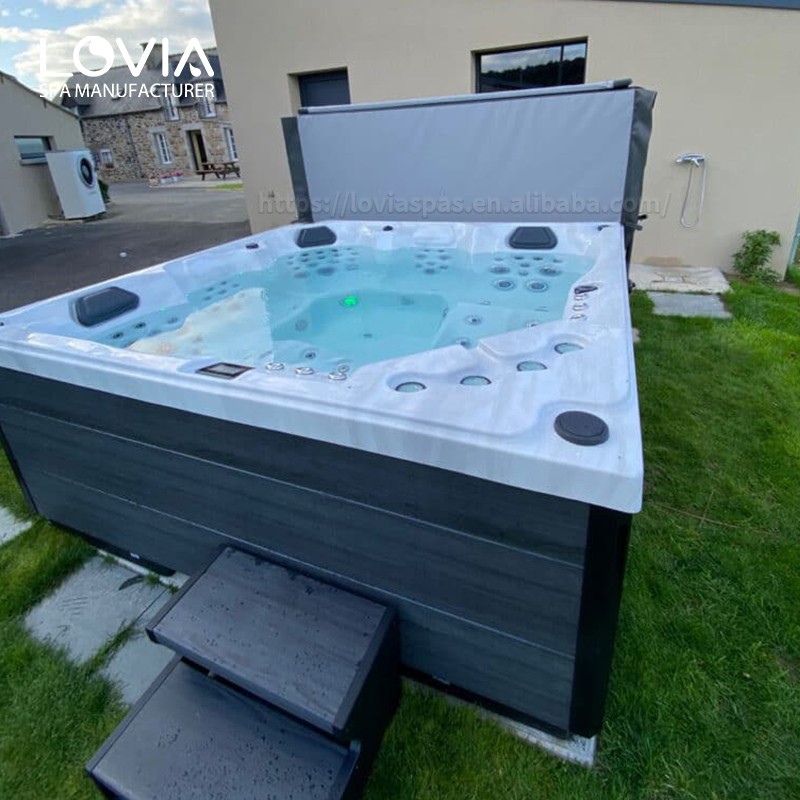
Is foam remover suitable for outdoor whirlpool hot tubs?
Since foam removers can effectively reduce foam, is it suitable for outdoor whirlpool hot tubs? The answer to this question depends on the specific situation. Using foam removers can temporarily solve the foam problem, but whether it is worth using frequently requires comprehensive consideration of several aspects.
Short-term effect of foam removers
The biggest advantage of foam removers is that they work quickly, usually eliminating foam in outdoor whirlpool hot tubs within minutes. Therefore, if you are about to use an outdoor whirlpool hot tub and find a foam problem, you can choose to use a foam remover to deal with it quickly.
But as mentioned earlier, defoamers can only temporarily remove foam and cannot fundamentally solve the problem of foam generation. Therefore, although it can improve water quality in the short term, if defoamers are used for a long time without solving the root cause, foam problems will recur.
Impact on water quality
The use of defoamers will not significantly change water quality because its working principle is mainly physical change. However, frequent use of defoamers may mask water quality problems and make underlying problems (such as chemical imbalances, contaminant accumulation, etc.) difficult to detect. Ignoring these underlying problems for a long time may cause damage to outdoor whirlpool hot tub equipment and affect the bathing experience.
Therefore, although defoamers have no direct negative impact on water quality, it is still recommended to use them with caution and regularly test the chemical balance in the outdoor whirlpool hot tub.
Is it safe to use whirlpool hot tub defoamers frequently?
Defoamers are generally safe, but this does not mean that they can be used without restraint. Frequent use of defoamers may mask other problems, such as excessive levels of organic matter or impurities in the water. If you rely on defoamers for a long time without taking other water quality maintenance measures, it may cause equipment damage or accelerate filter aging.
To ensure safe use, it is best to use defoamers occasionally rather than as the main foam treatment method. It is better to find the root cause of the foam and deal with it in time.
How to use defoamers correctly in whirlpool hot tubs?
If you decide to use defoamers in your outdoor whirlpool hot tub, it is very important to use them correctly. Here are some basic steps and precautions for using defoamers:
Use according to product instructions
Different brands and types of defoamers may vary in dosage and application method, so be sure to read the product instructions carefully before use. Generally speaking, only a small amount of defoamer is needed to achieve the desired effect. Excessive use will not only not improve the effect, but may also cause unnecessary waste.
Choose the right time
The best time to use defoamers is when you notice foam forming on the water surface, rather than waiting until the foam becomes very serious. Dealing with foam problems in advance can reduce the amount of chemicals used and avoid affecting water quality.
Avoid mixing chemicals
Try to avoid using defoamers with other chemicals at the same time, especially if you are not sure whether they will react adversely. Although defoamers themselves have little effect on water quality, they may cause some chemical reactions when mixed with other chemicals.
Clean your outdoor whirlpool hot tub promptly
Although defoamers can quickly solve the foam problem, this does not mean that you can ignore the cleaning of your outdoor whirlpool hot tub. Regularly cleaning the filters and pipes in the outdoor whirlpool hot tub to prevent the accumulation of organic matter and minerals can fundamentally reduce the generation of foam.
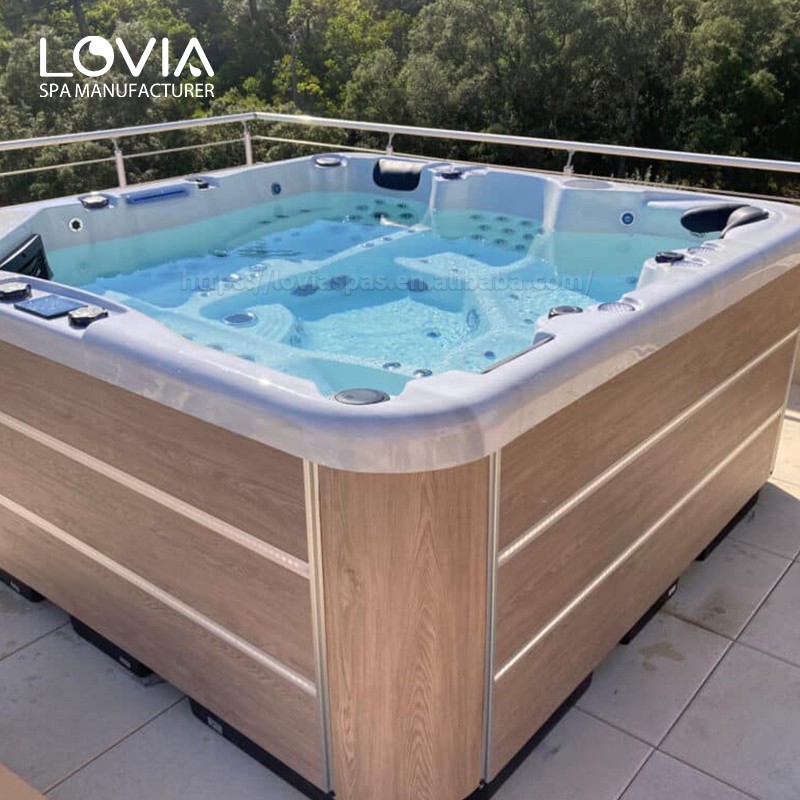
How to prevent the generation of foam in a whirlpool hot tub?
Since defoamers can only be used as a temporary solution, it is best for users to take measures to prevent the generation of foam during routine maintenance. This will not only reduce the frequency of defoamers, but also keep the water clean and the equipment functioning properly.
Maintain water quality balance
Regularly testing and adjusting the water quality parameters in the outdoor whirlpool hot tub to ensure that the pH value, total alkalinity and hardness are within the appropriate range can effectively prevent the formation of foam. Water parameters that are too high or too low will affect the surface tension of the water and increase the chance of foaming.
Avoid too much impurities in the water
Try to reduce the amount of cosmetics, shampoo, skin care products and other impurities entering the water. It is best to rinse your body before using the outdoor whirlpool hot tub. This can significantly reduce the generation of foam.
Clean and change the water regularly
Regularly draining, changing new water, and cleaning the filter and the inside of the outdoor whirlpool hot tub are important measures to reduce foam. These steps can not only effectively remove impurities, but also extend the service life of the equipment.
Looking for wholesale swim spas and hot tubs? Lovia Spa, a trusted manufacturer since 1989, offers customized outdoor spa solutions with premium quality and competitive prices. Our factory, spanning 45,000 square meters, delivers high-performance products to clients worldwide. With over 200 skilled workers and 1,200+ units produced monthly, we guarantee reliability and efficiency. Buy in bulk from Lovia Spa and enjoy exclusive discounts!


